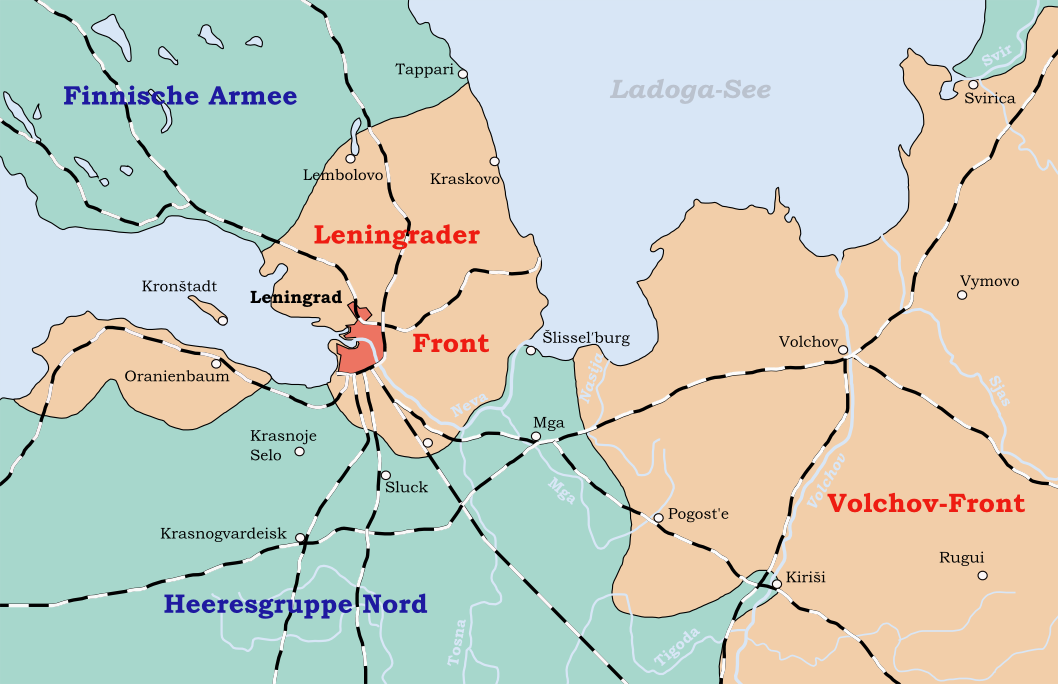

German forces begin their siege of Leningrad, a major industrial center and the USSR's second-largest city.Leningrad, formerly St. Petersburg, capital of the Russian Empire, was one of the initial targets of the German invasion of June 1941. As German armies raced across the western Soviet Union, three-quarters of Leningrad's industrial plants and hundreds of thousands of its inhabitants were evacuated to the east.

Map courtesy of Wikipedia.
German artillery and air bombardments came several times a day during the first months of the siege. The daily ration for civilians was reduced to 125 grams of bread, no more than a thick slice. Starvation set in by December, followed by the coldest winter in decades, with temperatures falling to -40 degrees Fahrenheit. People worked through the winter in makeshift armament factories without roofs, building the weapons that kept the Germans just short of victory.
Video courtesy of The Armchair Historian.
In early 1944, Soviet forces approached Leningrad, forcing German forces to retreat southward from the city on January 27. The siege was over. A giant Soviet offensive to sweep the USSR clean of its invaders began in May. The 872-day siege of Leningrad cost an estimated one million Soviet lives, perhaps hundreds of thousands more. The Soviet government awarded the Order of Lenin to the people of Leningrad in 1945, paying tribute to their endurance during the grueling siege. The city did not regain its prewar population of three million until the 1960s.
Information from History.com